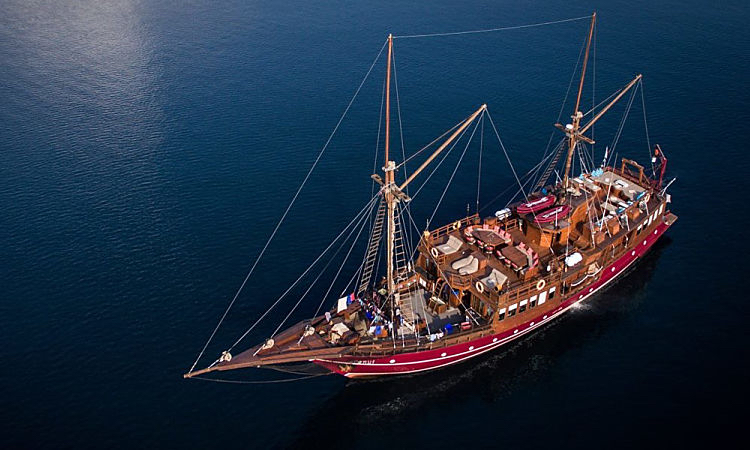
To help you plan your trip, we’ve prepared a list of basic information you’ll want to know before you book. Once your trip has been reserved, you’ll receive pre-departure information with all the details you need for your adventure.
Most international flights to Caribbean Islands transit through an airport in the United States. If this is true of the flight you book, please be sure that you have a visa which allows you to enter the US.
In genreal, for all Caribbean destinations visitors must have a current passport, valid for 6 months from date of entry, adequate funds to support themselves and a return airline ticket. However, policies can change or vary by nationality. It’s always best to contact the consulate or embassy of your country to verify the requirements
Dominican Republic: Visitors can pre-arrange a Dominican visa or purchase a tourist card for $10 U.S upon arrival at the airport (to be paid in cash … US dollars). Tourist cards normally permit a legal stay of up to 60 days.
The Caribbean islands are characteristically tropical in nature: hot & humid year-round, although late November to mid-April the temperatures can be a bit cooler (still warm enough to swim comfortably). Then, from April to early November you can expect muggy air and not temps … usually not above 32°C – 90 °F.
Generally speaking, the warmer months are also the rainier months … and it’s wise to remember that those months also bring the possibility of tropical storms and hurricanes.
AGGRESSOR NAMED STORM POLICY: If a named tropical storm or hurricane cancels all or part of your trip, you will receive a credit voucher called a “StormCheck” based on the number of days of diving missed. “StormCheck” vouchers allow guests to return to the same destination within one year of the interrupted trip.
Overall, scuba diving in the Caribbean is ideal for all levels of divers, including novices. If there is a particular dive site which the Cruise Director feels is too challenging for you, based on your experience and number of logged dives, you will be asked to skip that dive. But, with up to five dives per day on most days, you may be pleased to have a breather !
The Caribbean is a year-round destination although we do like to remind divers that tropical storms and hurricanes are a real possibility from mid-summer into early fall, expecially from August to October.
All of the liveaboards have a first aid kit onboard, including oxygen and an AED. You may want to bring motion sickness medication if you feel you will need it. We suggest you bring over-the-counter motion sickness medication or consult your doctor about prescription brands, such as the trans-dermal patch or Scopace tablets.
Belize : Belize, like all Central and South American countries, has reported cases of malaria and dengue fever, therefore, medication is recommended for extended stays into the mainland. We suggest that you consult with your doctor.
There are decompresssion chambers throughout the Caribbean: 3 in Dominican Republic, 2 in Cayman Islands, 1 in Turks & Caicos, 1 in Saba. … and several more.
Certain sunscreen ingredients have been found to be damaging to corals. These include oxybenzone, octinoxate, octocrylene, 4MBC, or butylparaben. Research indicates that these chemicals can cause DNA damage to corals, promote viruses in corals, and contribute to the bleaching.
Some dive destinations have banned these chemicals but we would encourage you to choose and use a sunscreen that is “coral safe” in all destinations.
Current studies show that you should wait at least 24 hours after multiple days with repetitive diving before flying. Please keep this in mind before you book your onward international or domestic flights.
The US dollar is official currency in certain Caribbean nations, but even if the country has its own currency, US dollars are genreally accepted in all tourist areas.
You can estimate approximately $100 per 7 nights for most of the port & park fees … also roughly $100 per 7 nights for fuel surcharge fees (all subject to change
Travel insurance : We strongly recommend comprehensive travel insurance to cover against unforeseeable events including personal & business impediments, illness, travel delays and missed flight connections. We hate seeing any of our clients fall into the category of unfortunate travelers who are without coverage for unexpected circumstances
Diving insurance: the liveaboards now require diving insurance. You must not confuse regular travel medical and/or travel insurance with diving-specific insurance such as DAN (Divers Alert Network) or Dive Assure. This type of insurance will cover all of your scuba diving and snorkeling activities, including the costs for recompression chamber treatment and emergency air evacuation. These are not covered by the average travel insurance.
We recommend Dive Assure as they are one of the few companies who offer insurance which includes general travel insurance, including trip cancellation …. plus full dive coverage.
Click here or on the button in the side panel to access Dive Assure directly.
Our tailor made Liveaboard Finder. It’s the easiest way to see the best offers, check availability in different destinations and get diving quickly!
